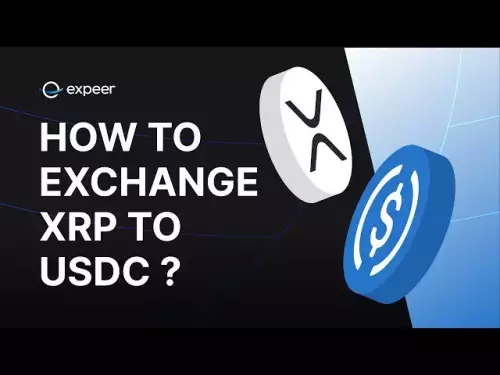-
 bitcoin
bitcoin $112715.707551 USD
-1.71% -
 ethereum
ethereum $4101.475385 USD
-3.01% -
 tether
tether $1.000644 USD
-0.02% -
 bnb
bnb $1207.619465 USD
-6.77% -
 xrp
xrp $2.501451 USD
-3.98% -
 solana
solana $202.947124 USD
-3.32% -
 usd-coin
usd-coin $1.000295 USD
0.04% -
 dogecoin
dogecoin $0.203884 USD
-4.47% -
 tron
tron $0.317154 USD
-1.72% -
 cardano
cardano $0.695009 USD
-4.43% -
 hyperliquid
hyperliquid $38.853961 USD
-8.23% -
 chainlink
chainlink $18.988674 USD
-4.64% -
 ethena-usde
ethena-usde $1.000233 USD
-0.03% -
 stellar
stellar $0.337050 USD
-3.63% -
 bitcoin-cash
bitcoin-cash $536.861728 USD
-1.28%
How to use the chip distribution map to identify the main cost area and pressure support level?
The chip distribution map helps traders identify key price levels where tokens were bought, aiding in setting strategic entry and exit points for cryptocurrency trading.
Jun 09, 2025 at 11:00 pm
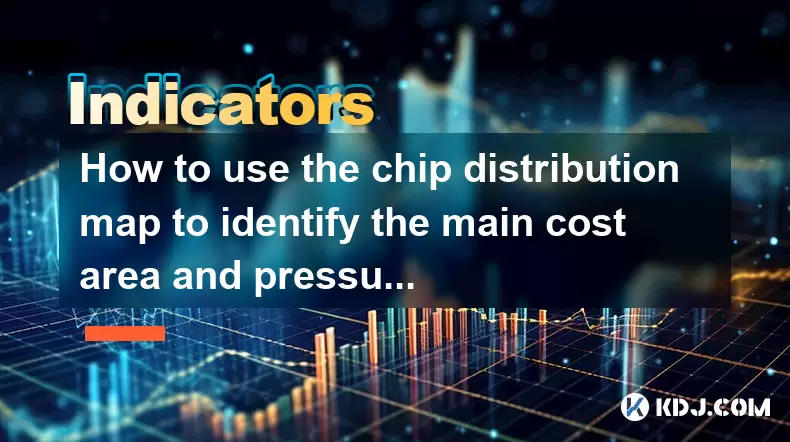
In the world of cryptocurrency trading, understanding the distribution of chips (or tokens) across various price levels is crucial for making informed decisions. The chip distribution map is a powerful tool that helps traders identify the main cost area and pressure support levels. By analyzing this map, traders can gain insights into where the majority of tokens were bought and where significant buying or selling pressure might occur. This article will delve into how to use the chip distribution map effectively to pinpoint these critical areas.
Understanding the Chip Distribution Map
The chip distribution map is a visual representation of the quantity of tokens held at different price levels. It shows how many tokens were purchased at each price point, providing a clear picture of the distribution of costs among investors. This map is essential for identifying the main cost area, which is the price level where the largest volume of tokens was bought, and the pressure support level, which indicates where significant buying or selling pressure might emerge.
Identifying the Main Cost Area
To identify the main cost area using the chip distribution map, follow these steps:
- Access the Chip Distribution Map: Begin by accessing the chip distribution map on your preferred trading platform. Most reputable platforms offer this tool in their analysis section.
- Analyze the Peaks: Look for the highest peak on the map. This peak represents the price level where the most tokens were purchased. This is your main cost area.
- Consider the Volume: Pay attention to the volume of tokens at this peak. A higher volume indicates stronger support or resistance at this price level.
- Confirm with Historical Data: Cross-reference the main cost area with historical price data to confirm its significance. If the price has historically bounced off this level, it reinforces its importance.
Identifying Pressure Support Levels
Pressure support levels are critical points where significant buying or selling pressure may occur. To identify these levels, follow these steps:
- Identify Multiple Peaks: Besides the main cost area, look for other significant peaks on the chip distribution map. These represent other levels where a considerable number of tokens were bought.
- Assess the Density: Evaluate the density of tokens at these peaks. Higher densities suggest stronger potential support or resistance.
- Combine with Market Trends: Consider current market trends and sentiment. If the market is bullish, lower pressure support levels might be more relevant, while in a bearish market, higher levels may come into play.
- Use Technical Indicators: Combine the chip distribution map with technical indicators like moving averages or RSI to validate the identified pressure support levels.
Applying the Chip Distribution Map in Trading
Once you have identified the main cost area and pressure support levels using the chip distribution map, you can apply this knowledge to your trading strategy:
- Entry and Exit Points: Use the main cost area as a reference for setting entry and exit points. If the price approaches this level, it might be a good time to enter or exit a position, depending on your analysis.
- Stop-Loss and Take-Profit Levels: Set stop-loss orders just below the main cost area to protect your investment. Similarly, set take-profit levels near identified pressure support levels to capitalize on potential price movements.
- Position Sizing: Adjust your position size based on the strength of the main cost area and pressure support levels. Stronger levels might warrant larger positions, while weaker levels suggest more conservative sizing.
Integrating with Other Analysis Tools
While the chip distribution map is a powerful tool on its own, integrating it with other analysis tools can enhance its effectiveness:
- Volume Profile: Combine the chip distribution map with a volume profile to get a more comprehensive view of where the most trading activity occurs. This can help confirm the main cost area and pressure support levels.
- Order Book Data: Analyze the order book to see where large buy or sell orders are placed. This can provide additional insights into potential pressure support levels.
- Sentiment Analysis: Use sentiment analysis tools to gauge market sentiment. Positive sentiment might reinforce the strength of identified support levels, while negative sentiment could indicate potential breakdowns.
Practical Example: Using the Chip Distribution Map
Let's walk through a practical example to illustrate how to use the chip distribution map to identify the main cost area and pressure support levels:
- Access the Map: Open the trading platform and navigate to the chip distribution map for the cryptocurrency you are analyzing, such as Bitcoin.
- Identify the Main Cost Area: On the map, you notice a significant peak at $30,000, indicating that a large volume of Bitcoin was bought at this price. This is your main cost area.
- Identify Pressure Support Levels: You observe another peak at $25,000, suggesting a secondary level where many tokens were bought. This could be a pressure support level.
- Analyze the Volume: The volume at $30,000 is significantly higher than at other levels, reinforcing its importance as the main cost area.
- Confirm with Historical Data: You check historical data and find that the price has bounced off $30,000 multiple times, confirming its role as a strong support level.
- Apply to Trading: Based on this analysis, you decide to set a buy order near $30,000, anticipating a bounce. You set a stop-loss just below $25,000, the identified pressure support level, to protect your investment.
Frequently Asked Questions
Q: Can the chip distribution map be used for all cryptocurrencies?A: Yes, the chip distribution map can be used for any cryptocurrency that has sufficient trading volume and data. However, the accuracy and usefulness of the map may vary depending on the liquidity and market depth of the cryptocurrency.
Q: How often should I update my analysis using the chip distribution map?A: It's recommended to update your analysis using the chip distribution map regularly, especially during significant price movements or when new market data becomes available. Daily or weekly updates can help you stay informed about changes in the main cost area and pressure support levels.
Q: Are there any limitations to using the chip distribution map?A: Yes, the chip distribution map has some limitations. It relies on historical data and may not account for sudden market shifts or external factors that can influence price movements. Additionally, the accuracy of the map depends on the quality and completeness of the data provided by the trading platform.
Q: Can the chip distribution map be used in conjunction with other trading strategies?A: Absolutely. The chip distribution map can be integrated with various trading strategies, such as trend following, mean reversion, or momentum trading. By combining the insights from the chip distribution map with other strategies, traders can enhance their decision-making process and improve their overall trading performance.
Disclaimer:info@kdj.com
The information provided is not trading advice. kdj.com does not assume any responsibility for any investments made based on the information provided in this article. Cryptocurrencies are highly volatile and it is highly recommended that you invest with caution after thorough research!
If you believe that the content used on this website infringes your copyright, please contact us immediately (info@kdj.com) and we will delete it promptly.
- Zero Knowledge Proof, Whitelist, Blockchain 2025: The Dawn of Private, Scalable Infrastructure
- 2025-10-16 01:20:01
- Altcoins, Whales, and Tariff Threats: Navigating the Crypto Seas
- 2025-10-16 01:20:01
- ChatGPT's Crystal Ball: HBAR Price Prediction and the Rise of Snorter in 2025
- 2025-10-16 01:20:01
- ZEROBASE Listing and Airdrop: A New Era for ZK Tech?
- 2025-10-16 00:25:13
- Digital Euro, Gold Standard, and Active Reserves: A New York Minute on the Future of Money
- 2025-10-16 00:25:13
- TCG OTS Pack Spoilers: What's Hot and What's Not?
- 2025-10-16 00:33:47
Related knowledge
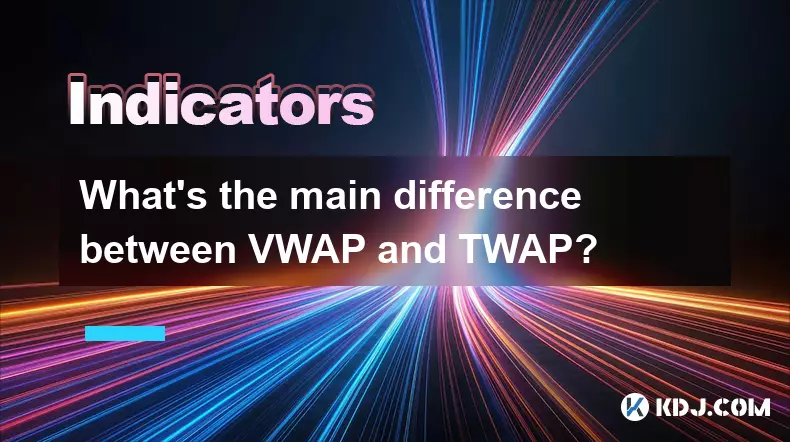
What's the main difference between VWAP and TWAP?
Oct 12,2025 at 11:54am
Understanding VWAP and Its Role in Crypto Trading1. Volume Weighted Average Price (VWAP) is a trading benchmark that calculates the average price of a...
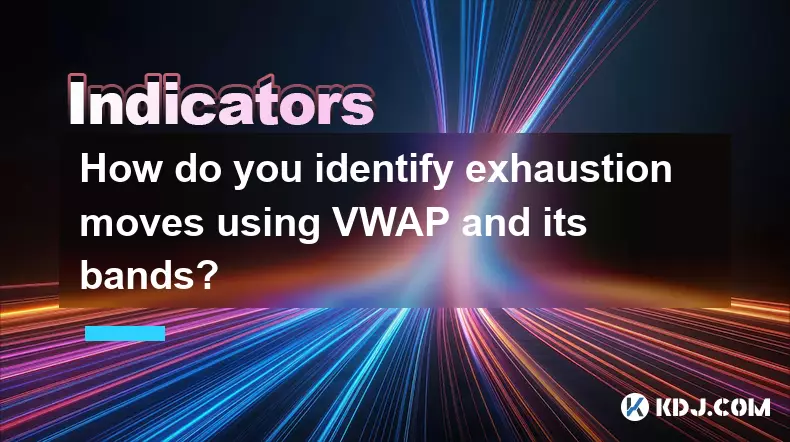
How do you identify exhaustion moves using VWAP and its bands?
Oct 12,2025 at 08:00am
Understanding the Role of Decentralized Exchanges in Crypto Trading1. Decentralized exchanges (DEXs) operate without a central authority, allowing use...
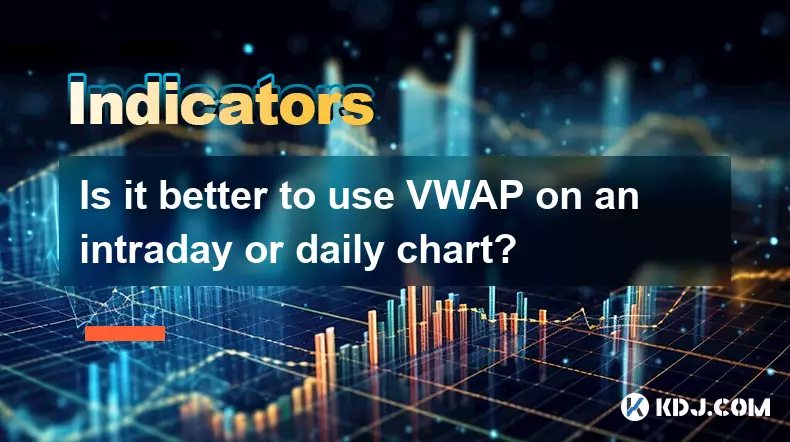
Is it better to use VWAP on an intraday or daily chart?
Oct 15,2025 at 02:01am
Intraday Trading and the Role of VWAP1. Intraday traders frequently rely on VWAP (Volume Weighted Average Price) as a dynamic benchmark for assessing ...
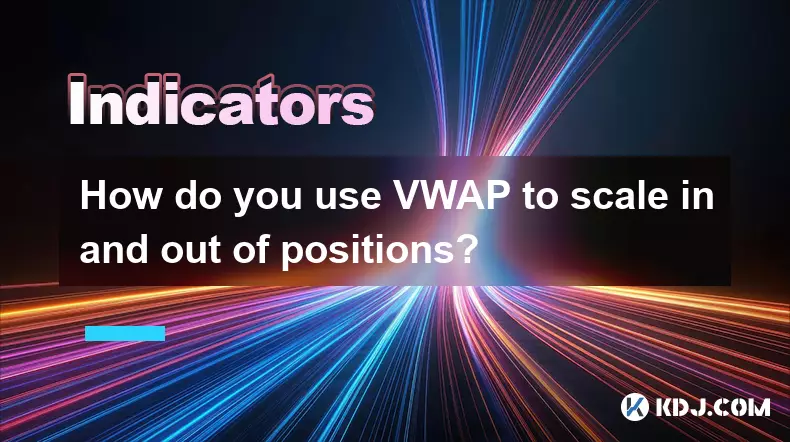
How do you use VWAP to scale in and out of positions?
Oct 14,2025 at 02:19am
Understanding VWAP as a Dynamic Benchmark1. The Volume Weighted Average Price (VWAP) is not just an indicator—it functions as a dynamic benchmark that...
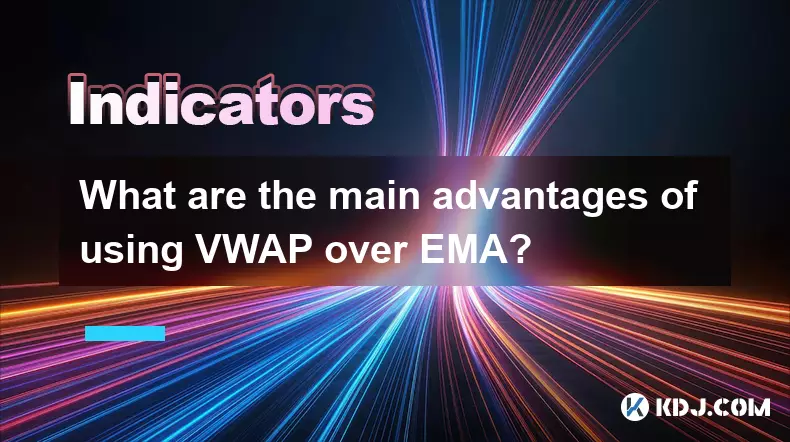
What are the main advantages of using VWAP over EMA?
Oct 11,2025 at 02:18am
Main Advantages of Using VWAP Over EMA1. Volume-Weighted Average Price (VWAP) incorporates trading volume into its calculation, offering a more accura...
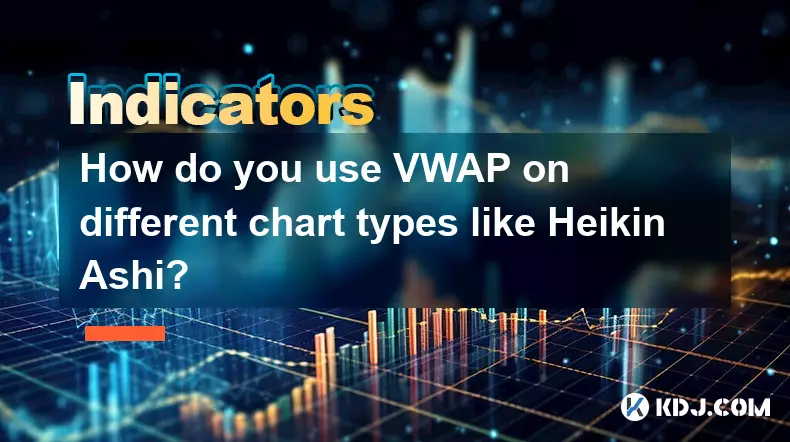
How do you use VWAP on different chart types like Heikin Ashi?
Oct 11,2025 at 05:01pm
Understanding VWAP in the Context of Heikin Ashi Charts1. The Volume Weighted Average Price (VWAP) is a powerful analytical tool commonly used by trad...

What's the main difference between VWAP and TWAP?
Oct 12,2025 at 11:54am
Understanding VWAP and Its Role in Crypto Trading1. Volume Weighted Average Price (VWAP) is a trading benchmark that calculates the average price of a...

How do you identify exhaustion moves using VWAP and its bands?
Oct 12,2025 at 08:00am
Understanding the Role of Decentralized Exchanges in Crypto Trading1. Decentralized exchanges (DEXs) operate without a central authority, allowing use...

Is it better to use VWAP on an intraday or daily chart?
Oct 15,2025 at 02:01am
Intraday Trading and the Role of VWAP1. Intraday traders frequently rely on VWAP (Volume Weighted Average Price) as a dynamic benchmark for assessing ...

How do you use VWAP to scale in and out of positions?
Oct 14,2025 at 02:19am
Understanding VWAP as a Dynamic Benchmark1. The Volume Weighted Average Price (VWAP) is not just an indicator—it functions as a dynamic benchmark that...

What are the main advantages of using VWAP over EMA?
Oct 11,2025 at 02:18am
Main Advantages of Using VWAP Over EMA1. Volume-Weighted Average Price (VWAP) incorporates trading volume into its calculation, offering a more accura...

How do you use VWAP on different chart types like Heikin Ashi?
Oct 11,2025 at 05:01pm
Understanding VWAP in the Context of Heikin Ashi Charts1. The Volume Weighted Average Price (VWAP) is a powerful analytical tool commonly used by trad...
See all articles


























